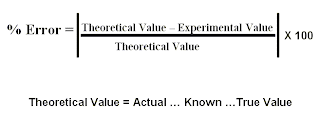Accuracy
Imagine hitting a bullseye for more than once and you see the darts are close to the center but they’re not necessarily close to each other. That pertains to accuracy. If your results are near the exact value needed, then they are accurate. The different results don’t have to be near each other. According to qualitydigest.com, no measurement is perfect and all measurements have some error associated with them.
Precision
Let’s try to go back to our imagination of a bullseye. What if you try to hit it again for four times and the results were not that close to the center but each result is near each other or the same? It means that your results are precise. Precision is the ability to have very close results with repeated experiments.
Let’s get to the big question. WHAT’S THE DIFFERENCE?
Accuracy and Precision are a bit the same but there’s also a big difference. When we speak of accuracy, we always try to get the right answer. If you have a number of results and one or maybe two of them are near the exact needed value, then you are accurate. The different results don’t have to be near each other, they just have to be near the correct answer. On the other hand, Precision refers to the nearness of the results to each other, and not necessarily on the correct answer.
Accuracy and Sensitivity in Measuring Devices
Since we already know about Accuracy, we will only discuss the meaning of sensitivity and its use in measuring. Sensitivity is known as the place value that is no longer represented or seen in the calibration. It is also the place value after the accuracy; it is already estimated or approximated.
Let's look at this image. There are calibrations, right? But what if the liquid that is inside this beaker goes in between those calibrations? how can we measure them?
Let's imagine a liquid that measures above 100 mL but below 125 mL. We can have an estimation of 110 mL. The accurate part of the measurement is 100 mL because we already know that it is above 100 mL. We estimated the 10 mL of the measurement because we only know that it is below 125 mL. The 10 mL part of our measurement is what we call the sensitivity of the measurement.
What's a percentage error? How do we do that?
Now, every time we take measurements in our experiments, we always measure it more than once. Now, we have to take note if our results are either accurate, precise or simply both. But how do we do that?
In order to determine accuracy and precision, we must first get the percentage errors of the results. Percentage errors are used to determine how close to the true values, or how accurate experimental values are.
According to gmasononline.com, this is how we get the percentage error.
We really hope you learned some stuff here, so we made some exercises for you. DON'T LOOK UP!
1. Accuracy :________ , Precision : group of values near each other
a. estimated value b. far from the correct value
c. near correct value d. Bias
________2. True or False. Sensitivity refers to the estimated part of the measurements.
________3. Gerard, Renzo and Inno recorded the temperature of a boiling liquid three times.
Gerard's Result - 78 C
Renzo's Result - 79 C Correct value - 79 C
Inno's Result - 78.5 C
Were the results accurate, precise, or both?
_______4. What is percentage error?



No comments:
Post a Comment